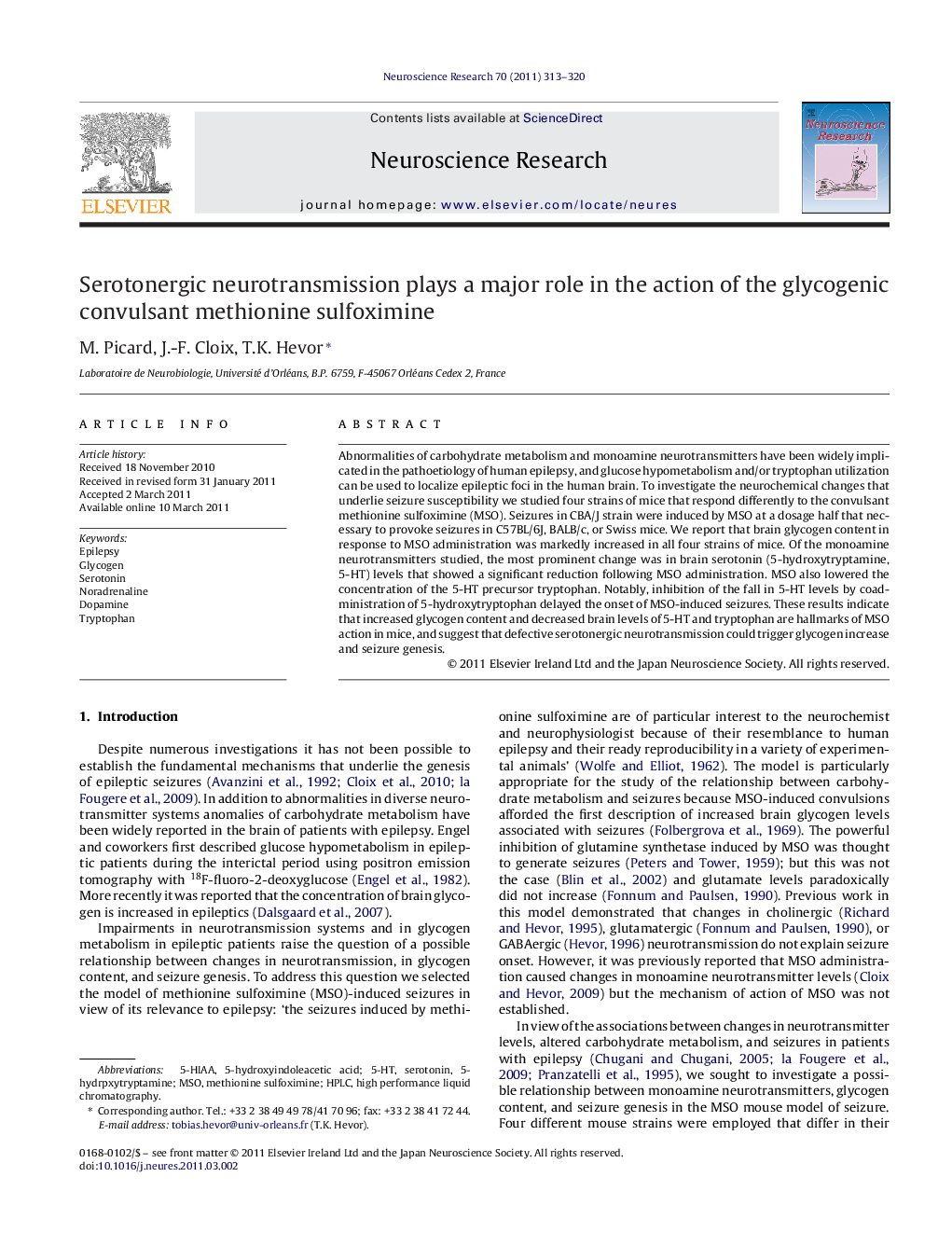| کد مقاله | کد نشریه | سال انتشار | مقاله انگلیسی | نسخه تمام متن |
|---|---|---|---|---|
| 4351702 | 1298077 | 2011 | 8 صفحه PDF | دانلود رایگان |

Abnormalities of carbohydrate metabolism and monoamine neurotransmitters have been widely implicated in the pathoetiology of human epilepsy, and glucose hypometabolism and/or tryptophan utilization can be used to localize epileptic foci in the human brain. To investigate the neurochemical changes that underlie seizure susceptibility we studied four strains of mice that respond differently to the convulsant methionine sulfoximine (MSO). Seizures in CBA/J strain were induced by MSO at a dosage half that necessary to provoke seizures in C57BL/6J, BALB/c, or Swiss mice. We report that brain glycogen content in response to MSO administration was markedly increased in all four strains of mice. Of the monoamine neurotransmitters studied, the most prominent change was in brain serotonin (5-hydroxytryptamine, 5-HT) levels that showed a significant reduction following MSO administration. MSO also lowered the concentration of the 5-HT precursor tryptophan. Notably, inhibition of the fall in 5-HT levels by coadministration of 5-hydroxytryptophan delayed the onset of MSO-induced seizures. These results indicate that increased glycogen content and decreased brain levels of 5-HT and tryptophan are hallmarks of MSO action in mice, and suggest that defective serotonergic neurotransmission could trigger glycogen increase and seizure genesis.
Figure optionsDownload high-quality image (83 K)Download as PowerPoint slideHighlights
► Half dose of the convulsant MSO induced seizure in one mouse strain out of four strains.
► Equally in all mice MSO increased brain glycogen and decreased serotonin contents.
► MSO lowered serotonin precursor tryptophan content in all mice.
► Inhibition of the fall in serotonin level delayed the onset of seizure.
► Serotonin system plays a pivotal role in MSO epileptogeny.
Journal: Neuroscience Research - Volume 70, Issue 3, July 2011, Pages 313–320